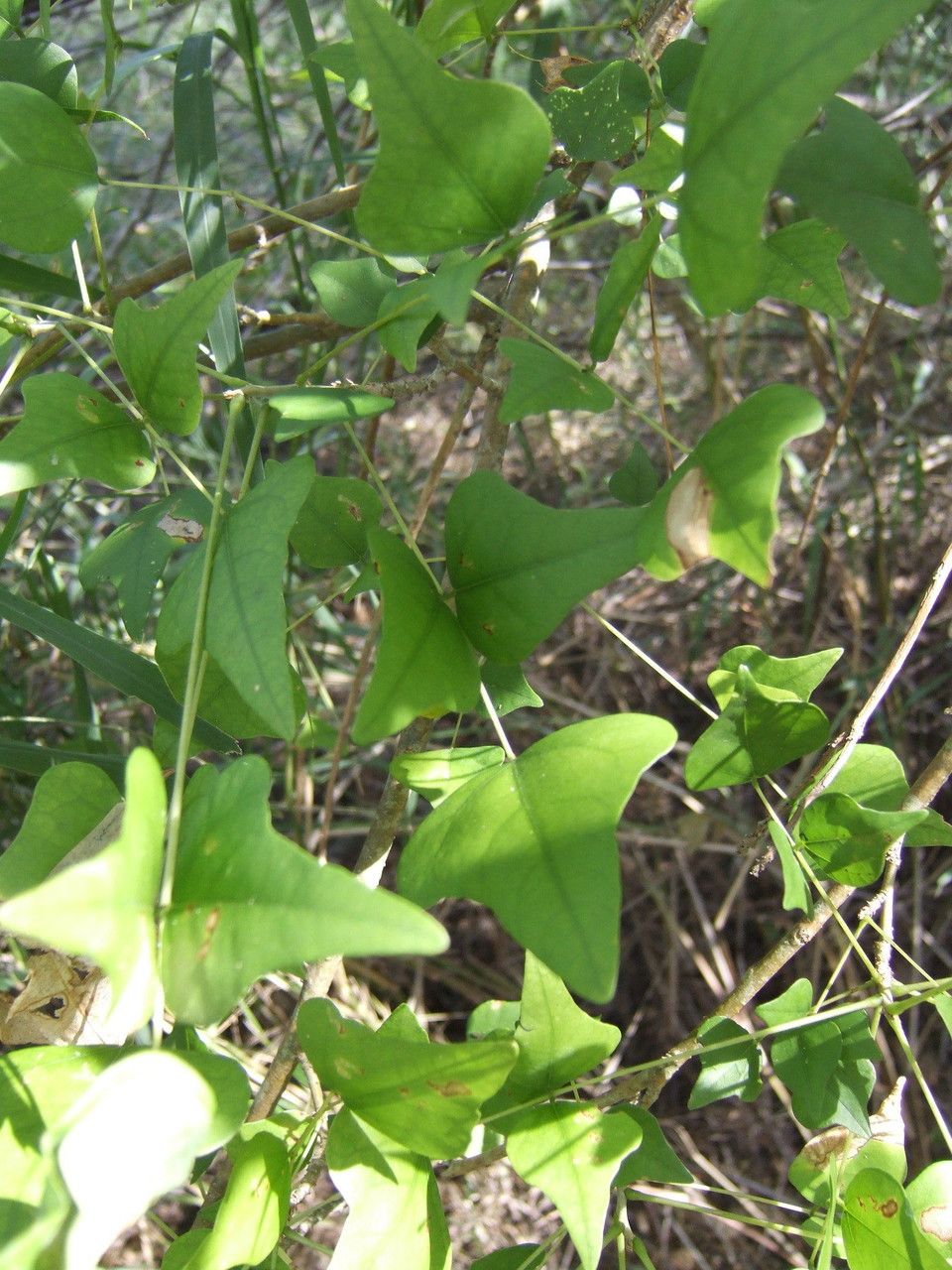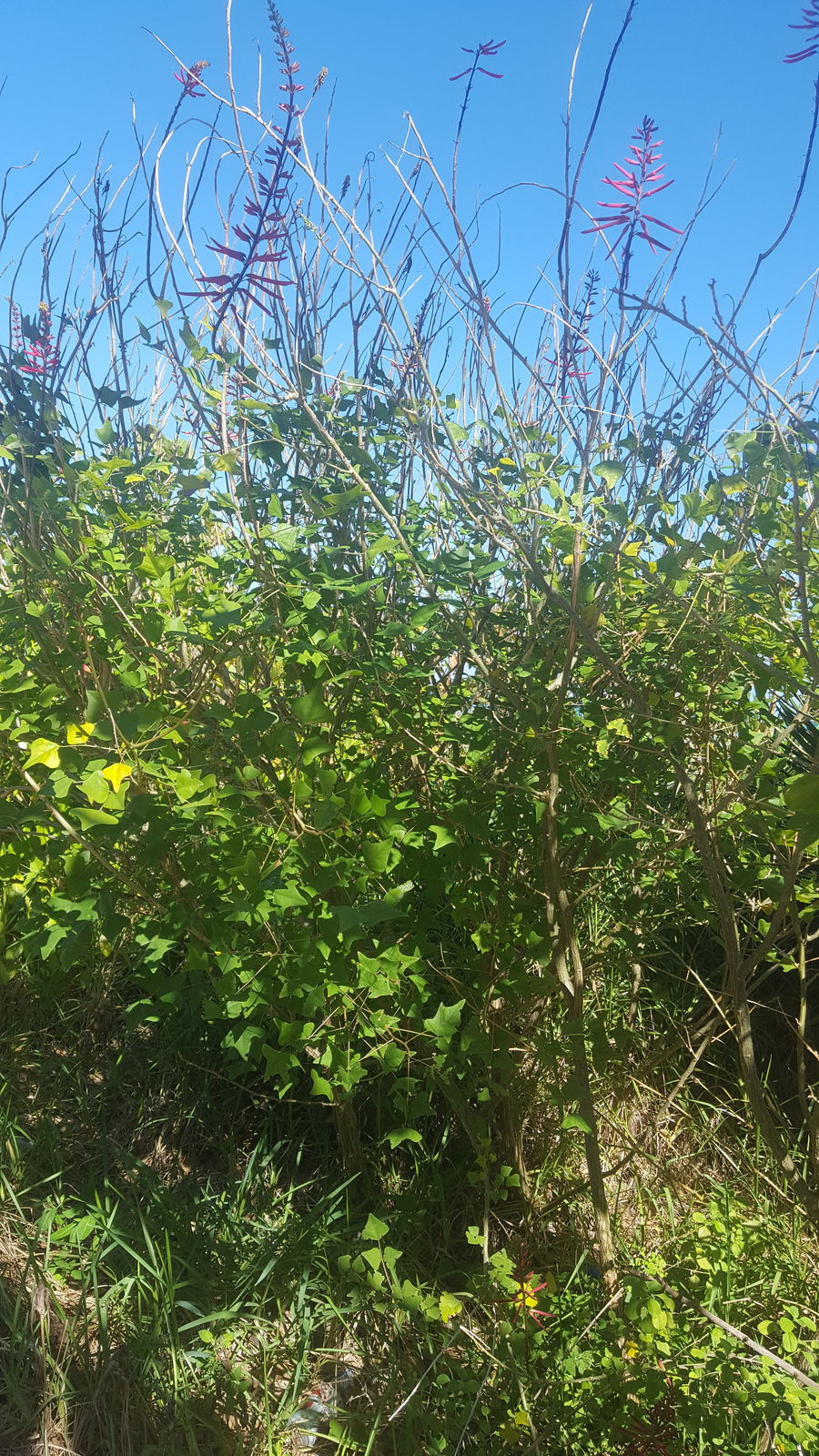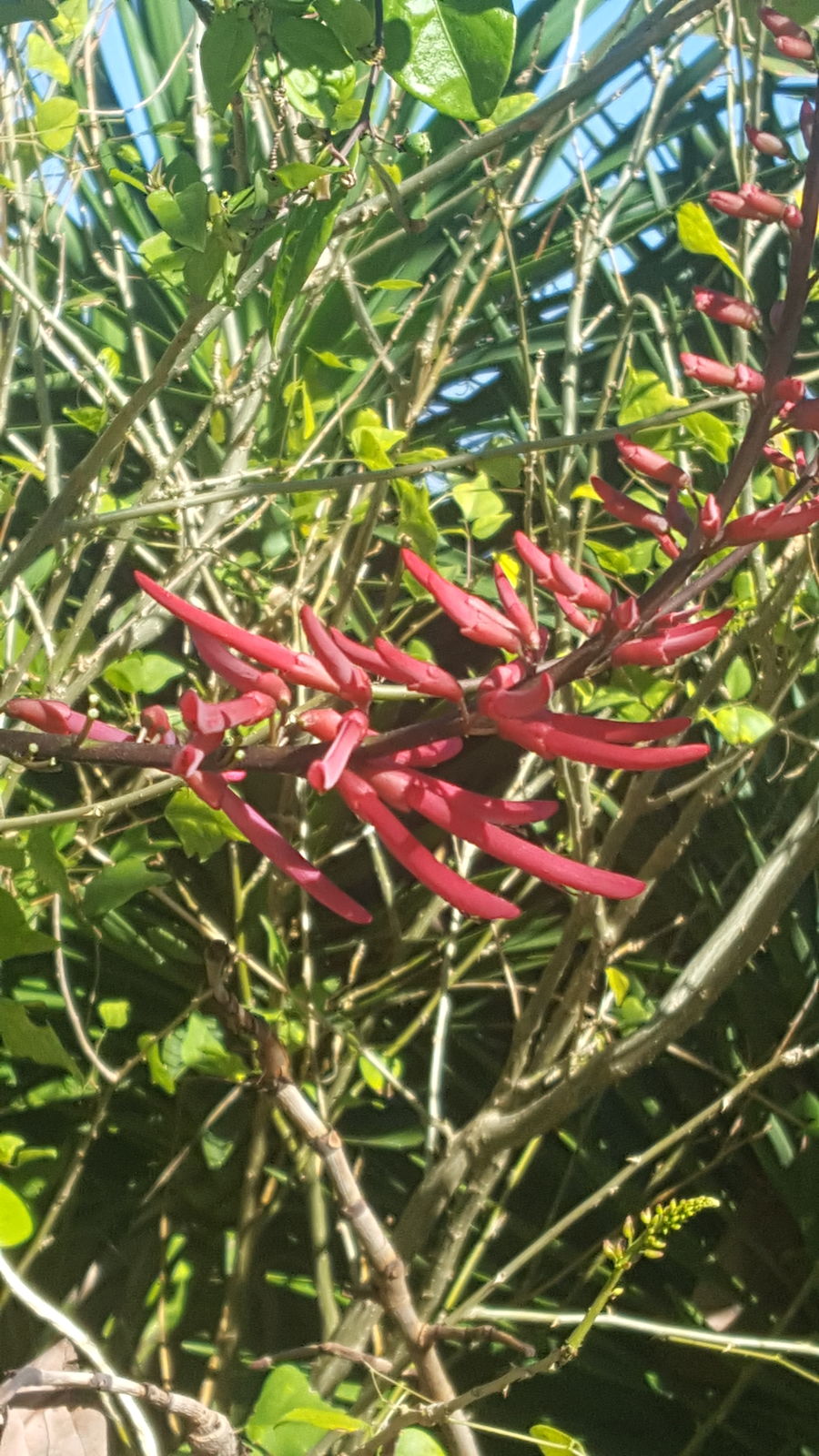Coralbean
erythrina herbacea
Also known as: ["Coral Tree","Cherokee Bean","Spineless Coral Tree"]
Overview
A deciduous shrub or small tree native to the southeastern United States, known for its striking red flowers that resemble coral and its toxic seeds.
Benefits & Perks
["long-flowering","wildlife attractant (bees, butterflies, birds)","drought tolerant","aesthetic foliage"]
Botanical Classification
| Phylum: | Magnoliophyta |
| Class: | Magnoliopsida |
| Order: | Fabales |
| Family: | Fabaceae |
| Genus: | Erythrina |
| Botanical Name: | Erythrina herbacea |
Plant Characteristics
Basic Information
- Category: Flowers
- Suitable Location: outdoor garden in open, sunny areas
- Suitable For:
- Is Weed: No
- Allergenicity: low
Environmental Needs
- Climate: {"temperatureRange":"5–35°C"}
- Hardiness: {"zones":"7–10"}
- Misting: rarely required, only if grown in very dry indoor conditions
- Drainage: Fast-draining; poor drainage can lead to root rot.
- Soil Type: Well-draining, sandy loam with some organic matter; tolerates poor soils.
Maintenance Level
- Maintenance Level: moderate
- Toughness Level: moderate
- Pruning Frequency: Annually in late winter or early spring before new growth begins.
- Pruning Intensity: Moderate; can be cut back by one-third if overgrown, but avoid heavy pruning after flowering.
Care Details
Ideal Sunlight Coverage:
Full sun (6–8 hours of direct sunlight daily); tolerates partial shade but may flower less.
Sunlight Tolerance Tips:
Acclimate new plants gradually to full sun; protect from intense midday sun in hot climates; ensure good air circulation to prevent leaf scorch.
Care Requirements
Care Difficulty
moderatemoderate
Sunlight
full sun
Full sun is essential for flowering; rotate plant for even growth; avoid deep shade.
Watering
every 7–10 days during active growth, less frequently in dormant periods
Water thoroughly but infrequently; ensure soil dries slightly between waterings; avoid overhead watering to prevent fungal issues.
Soil
well-drained, sandy or loamy soil
pH: Slightly acidic to neutral (pH 6.0–7.0).
Ensure soil dries between waterings; amend heavy clay soils; avoid waterlogged conditions.
Temperature
Hardy in USDA zones 7–10; prefers warm temperatures (65–85°F); tolerates brief frosts but may die back in colder zones.
Protect from frost; ensure good air circulation in heat; adjust watering with temperature changes.
Fertilizing
every 3–4 months during spring and summer
Fertilize only once a year; use a low-nitrogen formula; stop fertilizing in late summer to prepare for dormancy.
Propagation
Methods
Stem cuttings or seed; cuttings root more reliably than seed.
Step-by-Step Propagation Guide
- Take 4–6 inch cuttings.
- Remove lower leaves.
- Dip in rooting hormone.
- Plant in medium.
- Keep moist and warm.
Best Time: Late spring or early summer when the plant is actively growing.
Environment
Warm (70–80°F), humid environment with indirect light; protect from direct sun.
Medium
Well-draining mix of perlite and peat moss; can also root in water initially.
Hormone
Rooting hormone is recommended for cuttings to improve success rate.
Timeline
Cuttings may root in 4–8 weeks; seed germination can take several weeks to months.
Tools Needed
Pruning shears, rooting hormone, small pots, well-draining medium, plastic wrap (for humidity).
Quick Tips
Use softwood cuttings for best results; maintain high humidity; avoid overwatering.
Pruning & Repotting
Pruning Guide
Method
Selective pruning to maintain shape; cut just above a bud or lateral branch.
Pruning Plan
Prune to shape the plant and encourage flowering; remove dead or damaged wood annually.
Tools
Pruning shears, loppers (for larger branches), gloves.
Checklist
Disinfect tools; prune before flowering; remove dead wood; shape the plant; clean up debris.
Repotting Guide
Best Season
Early spring before active growth starts.
Pot Size
Increase pot size by 2–3 inches in diameter if repotting.
Method
Remove plant gently; trim any circling roots; repot in fresh, well-draining soil with a slightly larger pot.
Suggestions
Repot only if the plant becomes root-bound or outgrows its container; generally not needed for outdoor plants.
Checklist
Choose appropriate pot; prepare fresh soil mix; trim roots if needed; water after repotting; place in appropriate light.
Advanced Care Tips
Watering Mastery
Watering Checklist
Check soil moisture before watering; water deeply; ensure proper drainage; adjust frequency seasonally.
How to Apply Water Properly
Water at the base of the plant, focusing on the root zone; apply until water begins to drain from the bottom; water early in the morning to minimize evaporation.
Watering Schedule Tips
Water deeply once a week during the growing season; reduce frequency in winter to prevent root rot.
Soil Improvement
Add sand or perlite to improve drainage; incorporate compost for fertility; ensure good aeration.
Temperature Stress Management
Signs of Temperature Issues
Chlorosis or leaf drop in extreme heat; dieback or delayed growth in cold stress.
Cold Stress
Low temperatures can cause dieback of above-ground parts; roots may survive to regrow in spring.
Solution: Mulch heavily around the base in winter; protect from cold winds; in colder zones, grow in a container that can be moved indoors.
Hot Stress
Excessive heat can lead to wilting, leaf scorch, or reduced flowering.
Solution: Provide afternoon shade in extreme heat; water deeply to cool roots; use mulch to retain soil moisture.
Fertilizing Guide
Fertilizing Checklist
Use balanced fertilizer; apply in early spring; water after fertilizing; avoid late-season feeding.
Fertilizing Method
Use a balanced, slow-release fertilizer in early spring; avoid over-fertilizing, as Erythrina is not heavy feeder.
Common Problems & Solutions
Toxicity Warning
Cats
ToxicCats are highly sensitive to the cytisine alkaloid found in Erythrina herbacea, which can cause severe neurological and gastrointestinal distress. The toxin interferes with acetylcholine receptors, leading to muscle weakness and central nervous system excitation.
⚠️ Symptoms:
🌿 Toxic Parts:
⚡ Toxic If:
if eaten
Dogs
ToxicThe plant's cytisine content is highly toxic to dogs, causing severe gastrointestinal and neurological effects. The alkaloid disrupts normal neuromuscular function and can lead to life-threatening conditions.
⚠️ Symptoms:
🌿 Toxic Parts:
⚡ Toxic If:
if eaten
Humans
ToxicErythrina herbacea contains cytisine, a toxic alkaloid that acts as a nicotinic agonist, leading to neuromuscular blockade and central nervous system stimulation. Ingestion can cause severe physiological disturbances, including respiratory depression and cardiovascular effects.
⚠️ Symptoms:
🌿 Toxic Parts:
⚡ Toxic If:
if eaten
Frequently Asked Questions
Q: Is Coralbean toxic to pets?
A: Yes, all parts of the plant are toxic to dogs and cats if ingested.
Q: Does Coralbean attract wildlife?
A: Yes, it attracts bees, butterflies, and birds with its nectar-rich flowers.
Q: How should Coralbean be pruned?
A: Prune in late winter or early spring to shape the plant and remove dead or weak branches.
Quick Reference
| Family: | Fabaceae |
| Care: | moderate |
| Light: | full sun |
| Water: | every 7–10 days during activ |
Get Expert Care Tips
Download the Plantious app for personalized care reminders and plant identification!
Google Play App Store








